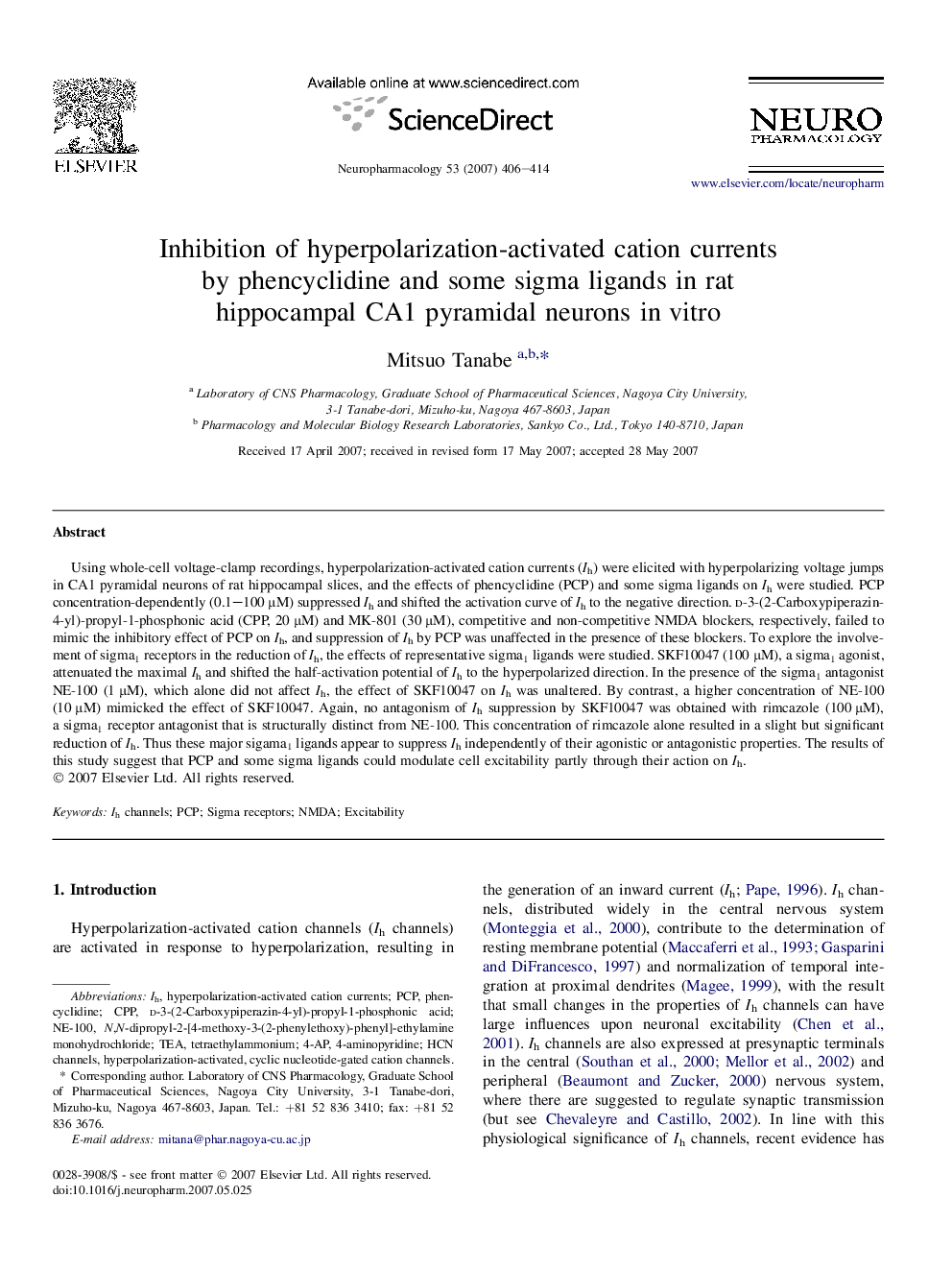| Article ID | Journal | Published Year | Pages | File Type |
|---|---|---|---|---|
| 2494760 | Neuropharmacology | 2007 | 9 Pages |
Using whole-cell voltage-clamp recordings, hyperpolarization-activated cation currents (Ih) were elicited with hyperpolarizing voltage jumps in CA1 pyramidal neurons of rat hippocampal slices, and the effects of phencyclidine (PCP) and some sigma ligands on Ih were studied. PCP concentration-dependently (0.1–100 μM) suppressed Ih and shifted the activation curve of Ih to the negative direction. d-3-(2-Carboxypiperazin-4-yl)-propyl-1-phosphonic acid (CPP, 20 μM) and MK-801 (30 μM), competitive and non-competitive NMDA blockers, respectively, failed to mimic the inhibitory effect of PCP on Ih, and suppression of Ih by PCP was unaffected in the presence of these blockers. To explore the involvement of sigma1 receptors in the reduction of Ih, the effects of representative sigma1 ligands were studied. SKF10047 (100 μM), a sigma1 agonist, attenuated the maximal Ih and shifted the half-activation potential of Ih to the hyperpolarized direction. In the presence of the sigma1 antagonist NE-100 (1 μM), which alone did not affect Ih, the effect of SKF10047 on Ih was unaltered. By contrast, a higher concentration of NE-100 (10 μM) mimicked the effect of SKF10047. Again, no antagonism of Ih suppression by SKF10047 was obtained with rimcazole (100 μM), a sigma1 receptor antagonist that is structurally distinct from NE-100. This concentration of rimcazole alone resulted in a slight but significant reduction of Ih. Thus these major sigama1 ligands appear to suppress Ih independently of their agonistic or antagonistic properties. The results of this study suggest that PCP and some sigma ligands could modulate cell excitability partly through their action on Ih.
